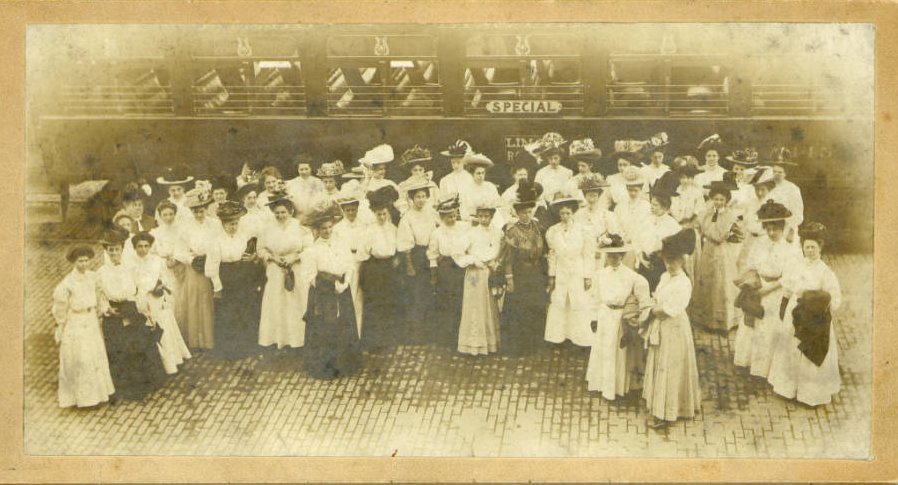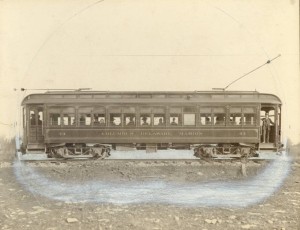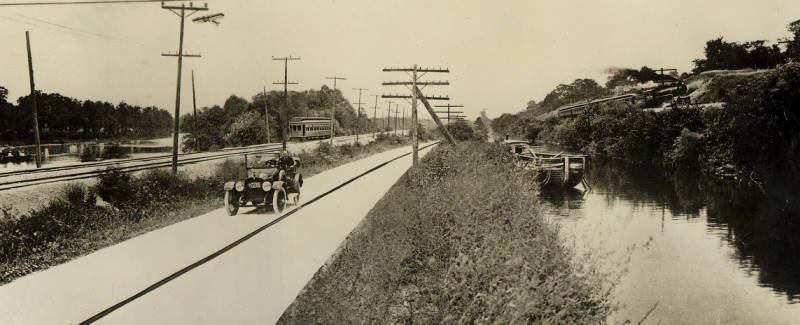Ohio’s Interurban Railways: The Original People Movers

Looking to get out of town this weekend? 100 years ago, you may have decided to book a trip on one of Ohio’s many interurban railroads–electrically-powered trains that connected communities together throughout the state.

During the late 19th century, Ohio business owners and communities began to build these railroads, with lines that usually extended only a few miles between nearby towns. The interurbans soon proved a quick and cheap alternative to regular railroads, canals, or horses. They could run on a more frequent and regular schedule than standard steam rail transport, and at a lower cost to passengers. While the interurban railroads primarily transported people from one location to another, they also carried farmers’ crops and business owners’ products.
By some accounts, the first interurban line in the United States connected Newark and Granville, Ohio, while the most profitable and heavily-utilized line in Ohio was the ABC (Akron, Bedford, and Cleveland) Line, completed in 1895. In 1915, over 15,000 miles of interurban routes were in operation throughout the United States, and by World War I, 2,798 miles of track existed within Ohio–a total which exceeded the next closest state by approximately one thousand miles! During their heyday in Ohio, nearly every city and town with a population of more than 5,000 was connected to the extensive system of interurban lines.
With the advent of the interurbans, Ohioans were more easily able to visit sites and spots throughout the state. This led to a burgeoning tourism industry at places like Buckeye Lake, Black Hand Gorge near Newark, and the Lake Erie shore. This Official Interurban Railway Guide from 1910, courtesy of the Hiram Historical Society, advertises hotels, restaurants and tourist attractions interspersed with train schedules for the general public, showing what kinds of enticements were available to railway passengers of the day.
Unfortunately for interurban companies, the advent of the automobile quickly led to rapid decline in travelers’ preference for this mode of transport, and by the early 1930s, most interurban lines in Ohio had ceased operation. In addition to material available on Ohio Memory, there are a number of railway and railroad museums throughout Ohio that can help you learn more about this lesser-known piece of our state’s transportation history.

Thanks to Lily Birkhimer, Digital Projects Coordinator at the Ohio History Connection, for this week’s post!



Leave a Reply
You must be logged in to post a comment.